 Virtuosity and Performance
Mastery issue, 2003/04
Virtuosity and Performance
Mastery issue, 2003/04
Ferenc Szucs and Mary Nunan
Copyright © Ferenc Szucs and Mary Nunan, 2003.
(No part of this text may be reproduced without the written permission of the authors.)
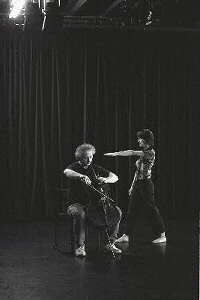
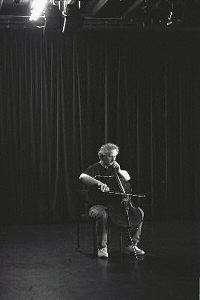
This material was presented live at the Virtuosity and Performance Mastery symposium for postgraduate/research degree students and academic staff over two days by Performing Arts at Middlesex University on 31st May and 1st June 2003.
Susan Melrose: I had asked Mary and Ferenc, separately, to make a
presentation at the Symposium, because both have a reputation as arts professionals, Mary as
a choreographer and dancer, and Ferenc as a concert soloist on the cello. Both are now also
senior academics at the University of Limerick, and both are registered for research degrees
in the School of Arts at Middlesex. What I didn't know was that Mary and Ferenc had
already begun to work together, looking at what would happen to their performance activity
and to their individual disciplinary mastery if these two instances of performance mastery
were brought together in a single performance space, and 'required' to work together.
What emerges is not a matter of (a once fashionable) hybridity, but instead the
outcome of an ongoing process of experimentation which I would want to argue is
'itself' a research undertaking (rather than the outcome of one). 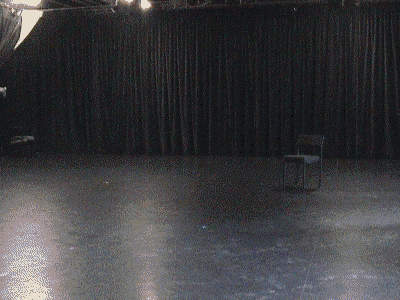 In the terms I have
set up, what we are going to look at is an epistemic engagement; one stage or instantiation
in an ongoing process of unfolding, which is itself characterised by affective investment -
that motor which, it has been argued, drives epistemic undertakings regardless of the
disciplinary field. I want to add, at this point, a comment about something which began to
emerge this morning, which is the issue of the discourse register, when we are attempting to
'talk practice' - especially creative practice; and a more specific comment about
wording 'the work' as something quasi-autonomous, an 'it' (in the third
person) which seems to appear, rather than to be commanded forth by the expert practitioner.
This latter issue is is vital to an understanding of the knowledge-processes engaged in
expert practice and its mastery. The expert creative pracititioner, in her own words, both
knows and does not know (yet), as one element in a professional
tool-kit and way of doing.
In the terms I have
set up, what we are going to look at is an epistemic engagement; one stage or instantiation
in an ongoing process of unfolding, which is itself characterised by affective investment -
that motor which, it has been argued, drives epistemic undertakings regardless of the
disciplinary field. I want to add, at this point, a comment about something which began to
emerge this morning, which is the issue of the discourse register, when we are attempting to
'talk practice' - especially creative practice; and a more specific comment about
wording 'the work' as something quasi-autonomous, an 'it' (in the third
person) which seems to appear, rather than to be commanded forth by the expert practitioner.
This latter issue is is vital to an understanding of the knowledge-processes engaged in
expert practice and its mastery. The expert creative pracititioner, in her own words, both
knows and does not know (yet), as one element in a professional
tool-kit and way of doing.
Ferenc: We want to talk a little about the presentation [which you have just seen] and then about our own individual research activity -
Mary: I'll begin by talking about the background to the activity. Basically Ferenc and I met at The University of Limerick where we are colleagues. Prior to this I had been working as a choreographer and as Artistic Director of a company for ten years but then I decided to step back from my choreography because I wasn't really interested in making work for a while. I wanted instead to do some research into it - because I wanted to ask questions that I couldn't ask within the company structure. So when we met and both of us wanted to work with somebody else and in a different way, in very practical terms - because we were colleagues and we could work together... We were looking for a piece to work with and Ferenc suggested the Kodaly piece.
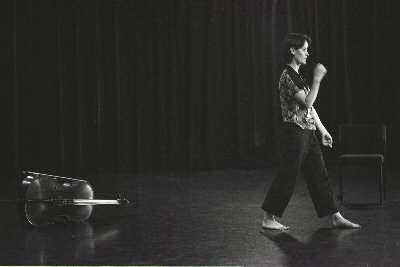
This is our third draft, maybe because the ways we work are incredibly different. So I listened to the Kodaly piece, and there was a very strong 'epic' feel to it, and I thought "What can I do with it?". Then I did some research into the background Kodaly was coming from and his interest in Hungarian folk music, and his interest in working that together within the classic idiom. So that gave me some sense of background information, and helped me to get some sense of a picture, but at the end of the day, I felt that choreography isn't about in some way describing the music. I wondered what sort of relevance and resonance this piece which was written around 1914 could have in terms of choreography, in terms of the sorts of choreographic questions I ask myself.
The first draft for this piece was done in Ottowa, under the mentorship of Peter Bonham, a piece called Claim, Reclaim. Interestingly enough it turned out to be a very political piece, in one sense. The title was because I was revisiting a work that I'd made ten years before - a work that I'd called Territorial Claims, engaging with the issue of traditional Irish dance and political intransigence and territorial claims - a Northern Irish issue really. And I thought "Oh, it's this kind of issue again" - you know, with folk tradition meeting my interest in issues of cultural identity. In Ottowa we ended up with a set which was broken glass and everyone was dressed in drab costumes, and it was a very austere manifestation, danced by three dancers, although I had researched it as six. It was interesting but I thought "No. It's not really that".
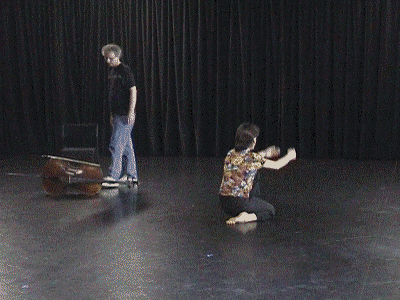
There was something else in choreography that I really wanted to explore - not necessarily this theme. So then we decided - we had a commission to do the piece at the International Dance Festival in Dublin, so we decided to continue working on the piece, but as a duet - I wanted to do the piece with Ferenc but as a dance solo. It was a really big piece of music to take on as a solo - it still is, and I'm not really sure that it works.
So rather than decide the theme beforehand, I wanted to spend some time trying to see if I could find a vocabulary within the music framework that would let me find what I wanted to say, so that the content could emerge from within the piece rather than be imposed on it. This question came up mainly because you might think that the music actually demands a classical or a neo-classical type of dance vocabulary to express it, or else something like a physical theatre approach. My own preoccupation at that time was to do with 'body gesture' I was trying to create techniques within my own choreographic research to generate a specific type of movement vocabulary so I was trying to figure out both how I might continue to work with that and connect it within this piece of music as well.
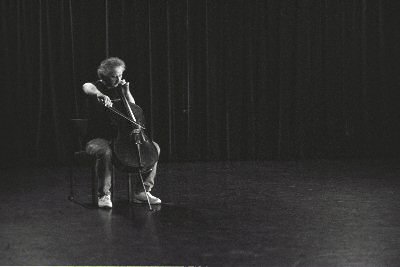
When we were talking this morning about the pas de deux [Wheeldon's Tryst, for Darcey Bussell and Jonathon Cope], as soon as you have a man and a woman in the space, from a choreographic point of view you have gender issues. So in this choreography you have a man and a chair in the space, and a woman, and immediately you have gender issues, and I knew that I had to negotiate these one way or another, because they're going to be there. So when we tried the first duet, that thing became a bit of a problem: how do we relate to each other or not relate to each other in the space, how do we not feel like - like I'm dancing the body of the cello! And I had really big problems with that. How do we get around that?
So the next choreographic consideration was that of gesture, because whatever gesture I make in space, there's a real lot of gesture going on from Ferenc with the cello, so the eye is really trying to - in fact it's a piece where you could really just watch the gesture it takes to make the music. So with that gesture and my gesture going on all the time in the space, there were not only gender and gesture issues to resolve, but there were also spatial issues. When we did it in Dublin, it was very hard - normally there is a blank space and with a solo dancer you have a sense of the square space and diagonal lines and so on but with Ferenc in the space it was quite tricky.
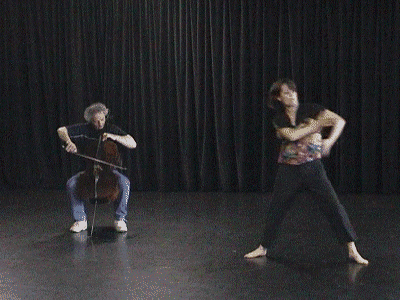
So there were these three issues that were there. But my preoccupation at that time was the movement vocabulary, again in terms of the questions of convention which came up this morning, I was in fact trying to break my habitual choreographic patterns. I came up with all these devices about how to break my own movement vocabulary, because I felt that I was pulled in a certain way that I wanted to get out of. I think that the vocabulary I found was very raw and I was happy about that. Instead of very clean, well punctuated neo-classical or formal lines it was this kind of very raw and - well, it had a logic but it was a logic of its own, and I had to attempt to find some kind of visual coherence, there, with the music. How to punctuate it? I was really trying to make room for the dance, but the music itself was so full. In the end, a there was too much movement and too much music. It didn't really add up. But in fact it was a very important process to go through, really wrestling with it.
In the third draft which was what you saw today we tried to go beyond using the music as the structure and having to create the movement as a response. I remember saying to Ferenc "Ferenc you're going to have to not play, at some point", So he said "Fine!", which really surprised me, because before that, it hadn't been an option. So then the idea came, which was to start with a structure which was bigger than the music. So then the music, which originally felt enormous, when we had a bigger structure the music got slightly smaller in terms of its dominance - I hope without diminishing its impact as a piece. For me there are many more resonances in this version of the work in progress - we're trying to peel away at the layers, till we get to a place where we find something of ourselves...
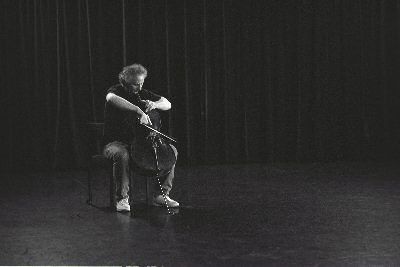
Ferenc: I suppose my experiences were totally different - if I were to play this piece for you as part of a concert or as a purely musical presentation, it would surely have been a different experience - although I did not alter my interpretation of the piece at all, except from the moment where I stopped and went back to the score. What was interesting was to discuss a lot of issues with Mary, about how the choreographer works and how the dancer thinks. First of all I was astonished to discover that a dancer doesn't really engage with the music as I expected. A dancer does not necessarily want to engage with the score and the musical form as a musician would, but primarily relates to the music as it sounds. She can also make a choreography and than choose a piece music - any music! - to go with it afterwards! I found that very interesting. So I started to talk to Mary about structures and about exposition and about beginnings and endings and subjects and development sections and so on, and she listened to all that very attentively ... I felt that I needed to express something that was part of me and that would not be judged by the classical music world... and also this meant that I was giving myself permission to enter a more open space and a more liberal structure, and I find that my attitude with regard to this piece of music has changed.
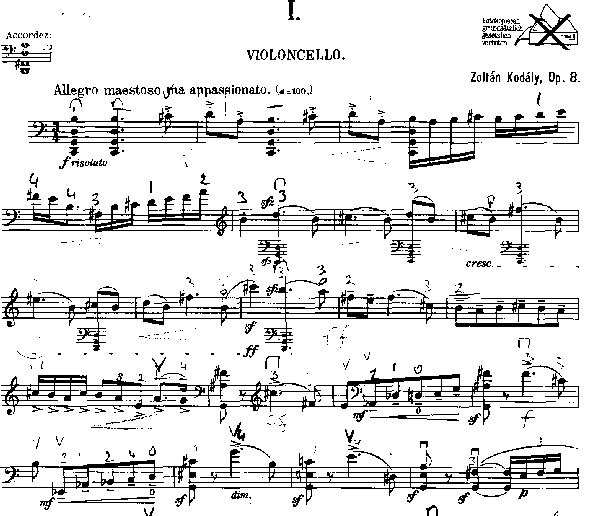
Copyright © 1921 by UniTersal Edition. Copyright renewed 1948. Copyright assigned 1952 to universal Edition (London) Ltd., London.
If I played this piece now in a concert, I would play it completely differently after this work-in-progress - I would say, more musically. And this brings up two issues, which I want to talk about briefly. The first is, as classical musicians, our relationship to the score - which I'm going to describe as written sign language, which is not the music itself . Hence how do we relate to the score itself and to the notion of the composer? The second issue is whether the performer - musician - who mostly performs other people's music - mostly 'dead white males' in fact - can the musician in this case be considered as a creative practitioner? When I moved to Ireland, - considered to be a tax haven for creative artists - I wondered if I could convince the tax office that I am actually a creative practitioner [rather than a mere interpreter of others' creativity, as they see me].
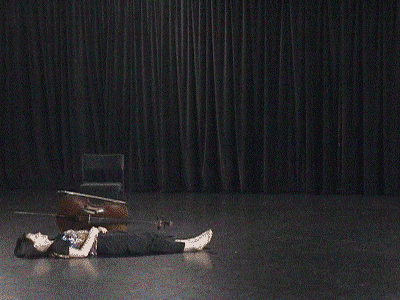
Mary: The focus of my research activity is the matter of creative process, and in particular I am fascinated by that state when you really don't know what you're doing - that moment of decision-making when you are actually, for all intents and purposes, suspended. You may have a lot of choices but in fact you're waiting for the choice to 'emerge', rather than to decide and then enforce it upon [the work]. I find that sometimes, when I look back at ten years of choreographing, I had probably been experiencing this all along without noticing it: once in a mentoring programme which Dr Diane Theodores was documenting I said, in the middle of a very intensive process 'I don't know what I'm doing!' . I was trying something new and I was completely lost, and it was like at that particular moment I - I was actually frustrated and angry and also angry about the fact that, when you're at your most vulnerable as a choreographer, you have all these people waiting around for you to come up with the thing. This is very different from the visual artist or the writer when perhaps you can go through your crisis in the middle of the night and probably come out with it resolved, but there's that moment in dance where there is a sheer intensity of needing - you know that you have to make a decision, and there are people waiting, and you're there waiting yourself and it's just not coming! Now I think that these are very actually very rich moments, so my question was whether you can develop a skill to deal with these moments rather than try to get rid of them or get through them quickly. My research question is what kind of skills can you develop to help you inhabit that moment and get through that moment very fully? Recognise the richness of it so that you have the courage to wait for the thing to arise. So that was the start of this research project: if you can wait for that moment, you're perhaps more likely to break habitual patterns, whereas if you try to get through that moment too fast, then the most likely thing you go for is something you know already.
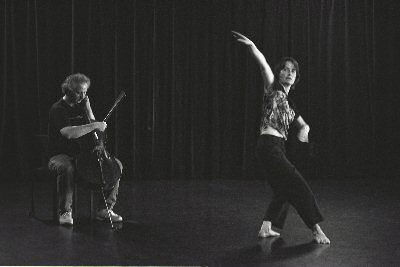
So: there is that moment when you're likely to be on the edge of something more exciting. But how do you hang there? So that's where my research really started: I've called it "the importance of not knowing what you're doing". I know that there is actually a disciplinary mastery there, and that I have a bit of experience [in making work] so when I claim to not know, what I'm doing is not choosing [familiar] things. I do have different options. For me, interestingly enough, I want to go outside of dance scholarship or even art, to observe that, and I'm very interested in observing it from the point of view of Buddhist psychology and the theory of the 'I' - I've been simultaneously studying and practising Buudhist theory for the last eighteen years and making work at the same time, and find that these two practices have something to say to each other. I would want to reflect that the concept of 'I' as verb, rather than pronoun, is very important; not 'I', Mary Nunan, the choreographer, but 'I' as series of processes - a shifting to begin to look at 'I' as something other than ego. So I would like to use a practice [Buddhist] to illuminate a practice [choreography]. I want to attempt to create a structure where I can argue that a choreographic practice is a philosophical enquiry and a philsophical expression. And I also want to look at the choreographer as a verb and a process, rather than a noun. But I can't help resenting having to justify my practice as research - à la université politics - yet I'm also very happy that there are people within the university who are very sensitive to the issues and are helping me to figure that out.
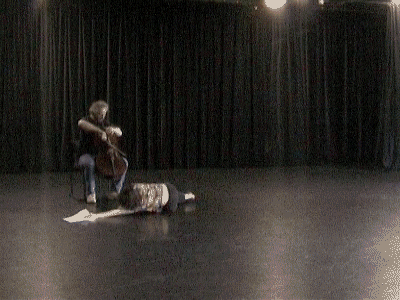
Ferenc: I am in a similar position, having worked as a professional performer until five years ago, when I was, apparently, one of the first professional performers to be approinted to a senior academic position. I'm not an academic in the normal sense but rather an art practitioner in an academic position. My activities and research can be very different from those of my colleagues at the university. At the same time, performing activities are not really understood as yet in terms of equivalence with writing based research, but I was thinking that at least the academy at which I studied in Budapest is now a university, and you can do a PhD there, or a Doctorate in Liberal Arts, and I wanted to know what I'd have to do to get a doctorate - which is, play a concert and analyse it. But I said to myself, "Well, I wouldn't learn anything, would I?".
What I thought then was that we do a lot of things that as practitioners we don't articulate verbally - and maybe we should. I wanted to learn how to articulate my own practice. And this was really exciting: when I enrolled for the research degree at Middlesex I was really excited: I thought that I could step out of familar areas and look at different viewpoints on what I already know.
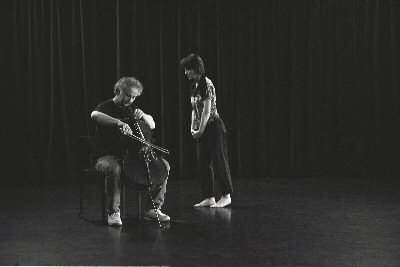
I said that I was going to talk about musicians' relationship to the scores - I'm only going to be talking anecdotally, on the basis of my own experience. One story concerns the legendary German conductor Gunther Wand rehearsing the G Minor Symphony of Mozart with the BBC Symphony Orchestra and having enormous fights with the orchestra. The orchestra would go, as they do "da da dum da da dum, da da dum dum", and he would say "no no no no no - I'm really not expressing this correctly", and they would go "da da dum, da da dum, da da dum dum". I really loved this man, but I was chatting to him afterwards and he said "I really don't need an orchestra, I can actually just look at the score and get immense pleasure out of it". (generalised laughter)
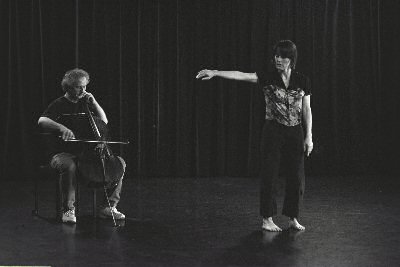
It is true that there are many musicians who can actually look at the score and hear it, but it is also interesting that in English the same word 'music' can be used for both the score and the sound. In Hungarian we have two different words, and they never interchange. The score and what you hear are quite different from each other. Now, I was wondering whether it is true that when we hear a score in our heads, that 'hearing' must already be informed by different performances of it. When we hear a new piece, that hearing is informed by [what we retain from] hearing similar sorts of music performed. Could anyone, if this is the case, hear with what we call the inner ear, without previous experience of music? I doubt it. But the score is actually a text, a collection of conventional signs, and not the music. It can also be a stumbling point. Our task is to switch from the level of the letter, to the level of performed sound. In words, we could talk about "distorting it slightly", or "putting the weight here, or there".
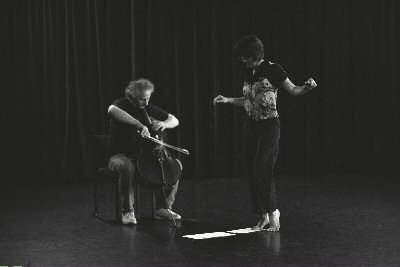
The piece you heard today was the first movement of the Sonata for Solo Cello Op. 8 by Kodaly. The third movement is technically incredibly difficult. This piece was written just before the First World War. It was practically the first huge piece for solo cello since the Bach Suites, written around 1720 - it's 200 years! - and Kodaly wanted to stretch the possibilities of the instrument. In fact, he stretched the possibilities so far that no-one was able to play the piece for decades. Janos Starker, a famous Hungarian cellist, was really the first performer to pick it up and play it in the 1950s. The first recording of this piece became a very important part of his career. I heard him talking about it on Hungarian television: he was saying that when he played this piece for the first time, Kodaly was present. He came off the platform and he said to Kodaly: "What do you think?", and Kodaly said: "Well, the first movement was good. The second movement not too slow; the third movement, don't separate the variations. Goodnight". Starker recounted this to indicate how little we have from a composer when it comes to how we play a piece.
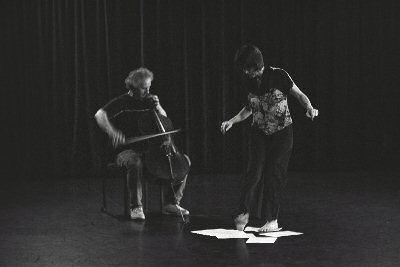
I want to talk a little now about creativity, and what we do as performers in terms of creativity. Of course, if I was actually composing a piece with Mary's choreography, the matter would be straightfoward - and we might attempt that in the future. But for now, we have a set piece. I asked a respected friend, Bruno Giuranna - one of the greatest and most respected viola players in the world - what do you think, Bruno: "Are we creative [in this context]?" And he said "As performers, we can be creative in the field of the how, whereas the general tendency with regard to creativity is [understood] in terms of the what. Our advantage here is that with regard to the music - the what - without the how the written music or text would remain lifeless".
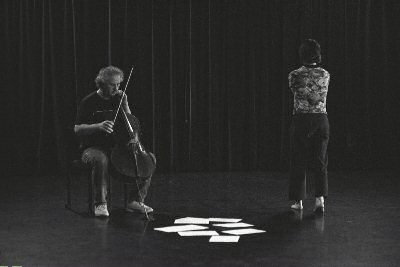
It's not so much what you do, but how you do it. I was watching some footage of Paul Tortelier giving a series of master classes in the 1970s. It was an incredible experience. He was working on one of the Brahms sonatas, for cello and piano. I was really astonished - I have been very familiar with this piece for over thirty years - to see that there was something completely new about it. There was a sense that he had great respect for the composer, of course, but the knowledge, the creative energy, and the sense of the creative potential in the context of interpreting these work, his voice or sound, on the cello, was different from that of anyone else. What was important was not so much what he played, but how he played it. It was undoubtedly emerging from his mastery, his own knowledge, and his personality [as a master performer]. In the question of the holy trinity between the composer, the performer and the audience - the balance of that, and how we see creativity here - well, we have this great canon of musical works but a lot of people say that we have attended the funeral of classical music [which implies that musicians themselves can't be creative]. We are sometimes in danger of mere repetition, or we may try to have a 'popular' version, or or a version with flashing lights or fireworks in the park, a version with - you name it. I want to read from Roland Barthes' text, "Death of the Author" - you are all probably very familiar with this - to conclude: "The text is not a line of words, releasing a single theological meaning, the message from the author God, but a multi-dimensional space, within which a variety of writings, none of them original, blend and clash. The text is a tissue of quotations drawn from the innumerable centres of culture". I wondered whether we could apply this to performance in music. Could this view be exercised in the context of music performance? What are the qualities of mastery in performance? Where does Tortelier fit, from this point of view? I am only beginning this process of enquiry.
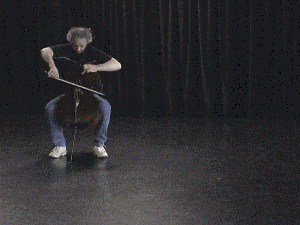
Ferenc Szücs has performed the cello in over fifty countries and has associations with numerous orchestras, institutes and ensembles world-wide. Born in Hungary, he studied at the Liszt Academy of Music in Budapest and won the prestigious State Award for musical excellence and particularly for his interpretations of Bach. He joined the Hungarian State Orchestra while still studying at the Academy and subsequently spent six years as principal cellist of the BBC Symphony Orchestra in London. He played with many grate conductors of our time including Solti, Dorati, Maazel, Wand, Haitink, Ozawa, Prichard, and Rozhdestvensky. He also performed a wide range of contemporary music working and recording withcomposers such as Messiaen, Boulez, Lutoslawsky, Stockhausen, Birtwhistle, Xenakis, Tippett and Schnittke. As a soloist Ferenc Szücs has given recitals and performed concertos with leading orchestras in England, Germany, France, Spain, Austria, Hungary and South America. He held teaching posts and given master classes in Europe and the USA. He has made solo and chamber music recordings for radio, television and recording companies including ASV, BMG, Arte Nova, Hyperion and Future Classics. He is currently Senior Lecturer and Director of the Master of Arts in Classical String Performance programme at the University of Limerick.
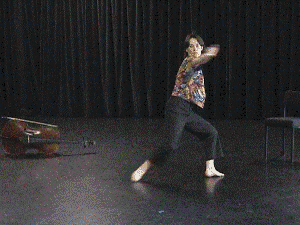
Mary Nunan is an independent artist, choreographer and performer. She is currently Course Director of the MA in Contemporary Dance Performance at the University of Limerick. Prior to this position she was Artistic Director of Daghdha Dance Company a professional contemporary dance company which she founded in 1988. Under her directorship Daghdha established itself as a Company with a unique and highly acclaimed artistic identity. Works she choreographed for the Company were performed by invitation at venues throughout Ireland and at international dance festivals in Berlin, Munich, Paris, Barcelona, London and Mexico City. In 1997 Mary collaborated with film director, Donal Haughey to produce a screen adaptation of her dance theatre work "Territorial Claims" which was premiered at the Cork Film Festival and selected for screening at the Lincoln Centre's prestigious Dance for Camera Festival in New York. In recent years she has been commissioned to create and perform new work most recently "Claim Reclaim", in collaboration with Ferenc Szucs for the first International Festival of Dance in Dublin May 2002 and "The Yellow Room" February 2003 in collaboration Yoshiko Chuma, Artistic Director of Daghdha Dance. Mary is currently interested in focusing her creative energy into researching and renewing aspects of her choreography. To this end she has been greatly assisted by being invited to participate as a choreographer in two choreographic residencies at the Institute for Choreography and Dance at the Firkin Crane in Cork. In January 2002 she was invited by internationally renowned mentor Peter Bonham to undertake a choreographic residency with his professional dance company Le Groupe in Ottawa, Canada. She will return there in 2004. She is also involved in an on-going choreographic research project with independent artist, and founder of Ireland's first contemporary dance company, Joan Davis.
Web design copyright © John Robinson 2004.
All monochrome photographs are copyright © John Robinson 2003.
Video frames by Hannah Bruce and John Robinson.
Last updated, 30th August 2004.